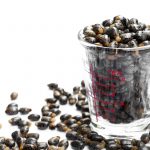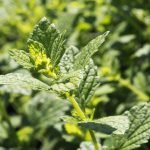New Research on Bitter Melon (Momordica charantia) and Diabetes
A recent research article highlights bitter melon (Momordica charantia) as a powerful tool in treating type two diabetes. Bitter melon has been used in traditional Chinese medicine (TCM) to treat obesity and type two diabetes for generations. Recent research further validates and supports the use of this traditional medicinal food. After an 8 week murine study, fasting glucose, insulin, HOMA-IR index, lipid levels, and adipocyte cell size all decreased with administration of 300mg of bitter melon powder (BMP). BMP also improved TNF-a, and IL-6 levels and anti-inflammatory cytokine IL-10. Local endotoxin levels were also decreased (1). The conclusion of this article was that it appears that BMP ameliorates insulin sensitivity partly by reducing inflammatory status. The endotoxin decrease is thought to have a relationship to the gut microbiota; treatment with BMP significantly lowered the proportion of endotoxin-producing (opportunistic) bacteria and commensal butyrate producers in this study.
Another recent article researched the modulatory effect that a cucurbitane‑type triterpenoid [(19R,23E)‑5β, 19‑epoxy‑19‑methoxy‑cucurbita‑6,23,25‑trien‑3 β‑o‑l] found in bitter melon had on the above metabolic indices. This study found a conclusive connection to the cucurbitane-type triterpenoid and lowered lipids, insulin, blood glucose levels, and organ indexes (2).
For more information on bitter melon and diabetes, see these past NDNR articles:
https://ndnr.com/naturopathic-news/bittermelon-reduces-heart-risk-in-diabetics-2/
https://ndnr.com/botanical-medicine/type-2-diabetes-mellitus-some-herbal-considerations/
 Node Smith, associate editor for NDNR, is a fifth year naturopathic medical student at NUNM, where he has been instrumental in maintaining a firm connection to the philosophy and heritage of naturopathic medicine amongst the next generation of docs. He helped found the first multi-generational experiential retreat, which brings elders, alumni, and students together for a weekend campout where naturopathic medicine and medical philosophy are experienced in nature. Three years ago he helped found the non-profit, Association for Naturopathic ReVitalization (ANR), for which he serves as the board chairman. ANR has a mission to inspire health practitioners to embody the naturopathic principles through experiential education. Node also has a firm belief that the next era of naturopathic medicine will see a resurgence of in-patient facilities which use fasting, earthing, hydrotherapy and homeopathy to bring people back from chronic diseases of modern living; he is involved in numerous conversations and projects to bring about this vision.
Node Smith, associate editor for NDNR, is a fifth year naturopathic medical student at NUNM, where he has been instrumental in maintaining a firm connection to the philosophy and heritage of naturopathic medicine amongst the next generation of docs. He helped found the first multi-generational experiential retreat, which brings elders, alumni, and students together for a weekend campout where naturopathic medicine and medical philosophy are experienced in nature. Three years ago he helped found the non-profit, Association for Naturopathic ReVitalization (ANR), for which he serves as the board chairman. ANR has a mission to inspire health practitioners to embody the naturopathic principles through experiential education. Node also has a firm belief that the next era of naturopathic medicine will see a resurgence of in-patient facilities which use fasting, earthing, hydrotherapy and homeopathy to bring people back from chronic diseases of modern living; he is involved in numerous conversations and projects to bring about this vision.
References:










